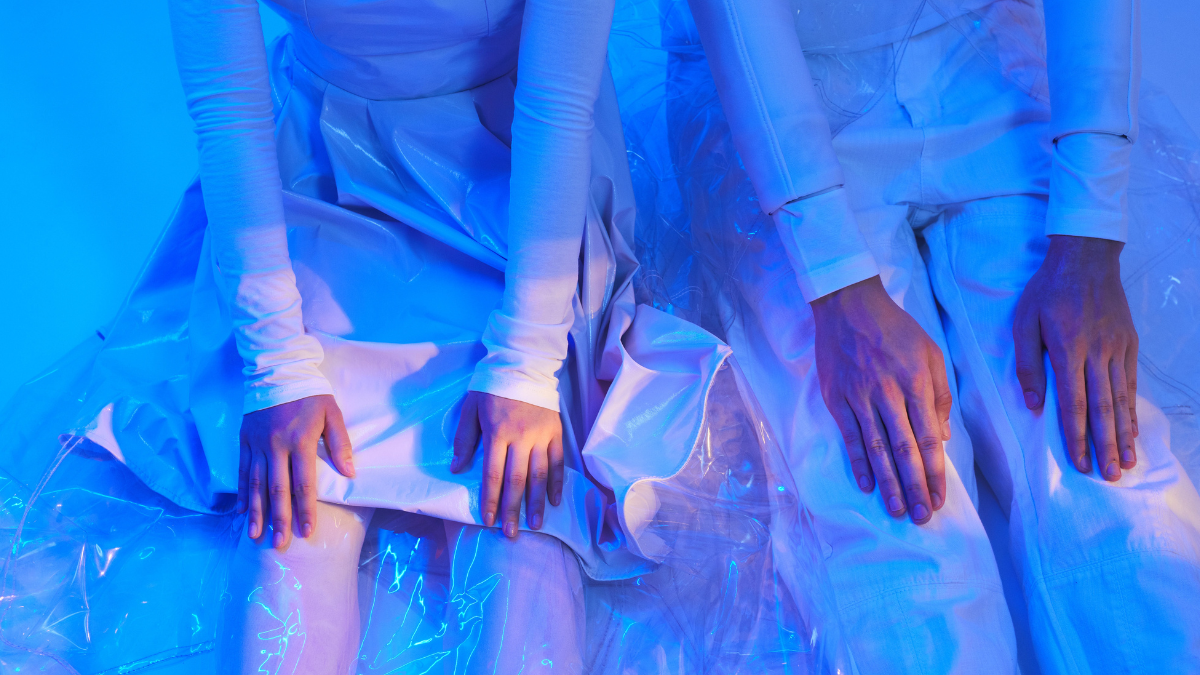Generative AI is making waves in the fashion industry. According to McKinsey, 73% of fashion executives said generative AI will be a priority for their businesses in 2024, but just 28% have tried using it in creative processes for design and product development. Hugo Barbera, co-founder of Paris-based AI, fashion, and advertising agency, HumAInade, is well ahead of the trend, using generative AI in his work for over a year.
MediaCat Magazine’s Content & Social Media Editor, Grace Gollasch, talked to Hugo about working with big fashion brands, being on the cover of Vogue Portugal, and how AI is impacting the fashion industry.
Hi Hugo. Can you tell me a little bit about HumAInade, when you started, how you started, and why you started it?
We started HumAInade about three months ago. My background is in advertising, and I’m also a freelance web designer, so about a year and a half ago, I started using Midjourney, and now I collaborate with my wife who works in fashion. We developed our first AI fashion editorial, which was covered for the 20th anniversary of Vogue Portugal. We began as a creative playground, a collaboration where I, as a designer, could integrate my vision with other perspectives. We involved a film director and CGI artist who understood CGI nuances, perspectives, and more. My wife, with her expertise in the fashion industry, also joined in.
We continue to treat it as a creative space, experimenting and trying new things. We recently started working with an NGO, exploring the creation of AI films for them. However, we view it as a path and acknowledge that the current state of AI might not match the quality expected for big or luxury brands. It’s trendy, but we believe it will improve over time.
You’ve worked with various brands. Can you share your creative process when working with a brand? Is it a lot of trial and error?
Absolutely. When I did my first AI editorial for a brand, it wasn’t successful. I realised we deviated from our usual creative process. Normally, we start with a mood board and a creative concept, defining what we want to express. Then, we cut elements from the mood board to create a brief. It involves trial and error, especially when using Midjourney initially. Now, with more experience, we follow the same creative process when doing fashion, brand, or web design but with a clearer focus.
You mentioned working with Vogue Portugal. Can you share more about that process and being featured on the cover?
We weren’t initially contacted by Vogue, because we we were just testing things. We pitched our AI fashion editorial to them after developing over 4000 images, and sending them around 40 or 50 images and asked if they were interested. And they selected around 16 for publication. We didn’t know it was going to be covered, It was a surprise to us, and we learned about the cover feature when they published it for their 20th-anniversary edition.
What has been the response from brands you’ve worked with regarding AI?
Right now, it seems like we’re still in the early stages of the process. While AI is quite popular and trendy, it’s a bit premature for brands because the results aren’t perfect yet. I mean, if a brand is tight on budget and needs something quick, it’s okay. However, we don’t want to position ourselves as selling expertise solely for monetary reasons. We’re not making things cheaper by using AI; rather, we’re delivering faster because we use AI. That’s why, currently, we typically don’t use AI for final visuals. Instead, it plays a crucial role in assisting us throughout the entire creative process, helping us create storyboards and Photoshop documents efficiently.
In one page, we can encompass everything — models, styles, photography preferences, angles, and more. Previously, we had to prepare a slide for each element. Once you’ve mastered it, you can produce everything more rapidly. This aids us in presenting a preview to clients, making the photo shoot visualization process smooth. Even though the final execution involves our photographer, the initial stages with AI make the overall process much faster and more efficient, whether for photography or film.
Creating storyboards and mood boards in a day is quite impressive; it condenses what used to take two weeks.
Are there any other exciting projects coming up? I noticed some designs from your wife’s brand at AI Fashion Week. Can you tell me more about that?
We use AI daily across various projects, including my wife’s sustainable fashion brand. For the NGO we are working with, they are exploring meta-philanthropy and AI, so it matches the branding and the vision. While many brands approach us for AI projects, we remain transparent about its current limitations in terms of cost and final results.
We presented designs for AI Fashion Week from her brand based on sustainability, experimenting with materials like carpets and curtains. While not my primary interest, it was an exploration of opportunities, showcasing our commitment to sustainability.
Is there anything else you’d like to add about human-made or AI in general?
We’re focused on improving our workflow and results by experimenting daily. It’s crucial for AI developers to collaborate with creatives who understand the practical aspects and expectations of the industry. Many technologies are built without involving those who will use them, hindering broader adoption. We aim to bridge that gap by working closely with brands and AI startups.
Featured image: Michelangelo Buonarroti / Pexels

